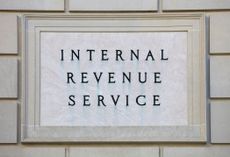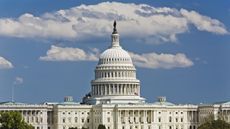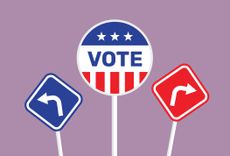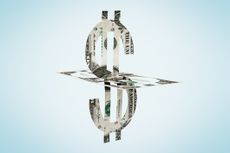Big Tax Changes Loom For Individuals, Businesses
It’ll take a year or three of intensive debate, but a major tax overhaul is a good bet.

Come this fall, Congress faces a big fight over whether (and for how long) to extend the Bush tax cuts. Further down the road, though, a much bigger tax reform battle awaits: A complete overhaul of individual and business taxes. It won’t happen quickly -- probably not until after the 2012 presidential election -- but the preliminary skirmishing is already beginning.
A bipartisan proposal offered by Sens. Ron Wyden (D-OR) and Judd Gregg (R-NH) bears watching. It will undoubtedly change in all sorts of ways as the debate proceeds, but it’ll give you a good idea of what lawmakers are planning.
For starters, the Wyden-Gregg plan would cut the number of tax brackets in half, from six to three. Couples would pay 15% on their first $75,000 of taxable income, then 25% on the next $65,000 and then 35% over $140,000. Currently, the 35% tax bracket starts at $373,650. The rate brackets for singles would be half of those for couples. While the brackets would be indexed to inflation, the adjustments would be lower than they are now.

Sign up for Kiplinger’s Free E-Newsletters
Profit and prosper with the best of expert advice on investing, taxes, retirement, personal finance and more - straight to your e-mail.
Profit and prosper with the best of expert advice - straight to your e-mail.
Standard deductions would soar: $30,000 for married couples, $15,000 for singles and $22,500 for heads of households. Far fewer filers would benefit from itemizing.
Three hidden tax increases would be nixed: The alternative minimum tax plus the itemized deduction and personal exemption cutbacks for upper incomers.
On dividends and long-term gains, a 35% exclusion would be allowed, making the top rate 22.75%. Filers could also exclude 35% of up to $500,000 of gains on the sales of assets that were held between six months and one year.
Municipal bonds would be less tax favored. The exemption for interest on newly issued bonds would be replaced with a tax credit for 25% of the interest. Municipal bond funds would report separately to investors on newly issued bonds.
The income tax base would be broadened by eliminating many tax breaks: Flexible spending plans for health and dependent care. Miscellaneous itemizations. The exclusion for foreign earned income. Moving expenses. Deferring interest on newly issued savings bonds. Taxing fringes such as group-term life, employer provided meals and lodging and employee awards.
The net effect: A tax hike of over $200 billion on individuals over 10 years.
For businesses: Corporations would pay tax at a flat 24% rate, down from the 35% maximum rate under current law, a significant reduction. And small firms could expense all equipment and inventory purchases. To qualify, a company’s average annual gross receipts could not exceed $1 million. Larger companies would have to take depreciation over longer periods.
Some tax breaks would be axed: The deduction for domestic production. Use of the installment method by nondealers. Completed-contract accounting. Plus techniques to defer the business income of controlled foreign subsidiaries. And deductions firms claim for interest paid on debt would be reduced by inflation.
The bottom line is a net tax cut of $200 billion or so for businesses.
The proposal is a good indicator of the challenges ahead on tax reform. Lawmakers won’t be able to sell the public on a business tax cut funded by tax hikes on individuals. That significantly dims the prospects for a deep corporate rate cut. Any tax overhaul is likely to be revenue neutral for individuals and businesses, or to contain a small net hike on corporations to fund tax reduction for individuals.
Get Kiplinger Today newsletter — free
Profit and prosper with the best of Kiplinger's advice on investing, taxes, retirement, personal finance and much more. Delivered daily. Enter your email in the box and click Sign Me Up.

-
 Is Netflix Stock Still a Buy After Earnings, Price Hikes?
Is Netflix Stock Still a Buy After Earnings, Price Hikes?Analysts were bullish on Netflix stock ahead of its earnings beat, but what is Wall Street saying now? We take a closer look.
By Joey Solitro Published
-
 Procter & Gamble Stock Rises on Earnings Beat: What to Know
Procter & Gamble Stock Rises on Earnings Beat: What to KnowProcter & Gamble is trading near the top of the Dow Wednesday after the consumer staples giant beat expectations for its fiscal 2025 second quarter.
By Joey Solitro Published
-
 No New IRS Agents? What Trump’s Federal Hiring Freeze Means for Your Tax Return
No New IRS Agents? What Trump’s Federal Hiring Freeze Means for Your Tax ReturnIRS Will an executive order reshape the IRS and impact how long it takes to get your tax refund?
By Kelley R. Taylor Published
-
 Trump Pushes for ‘One Big, Beautiful Bill’ With Focus on Tax Cuts
Trump Pushes for ‘One Big, Beautiful Bill’ With Focus on Tax CutsTax Policy Is combining taxes, border security, and energy policy into one piece of legislation to be passed in 100 days a realistic approach?
By Kelley R. Taylor Last updated
-
 The TCJA May Help Nonprofits Next Year: Here’s Why
The TCJA May Help Nonprofits Next Year: Here’s WhyTax Law A potential TCJA extension could help nonprofits. But is it enough to keep up with inflation?
By Kate Schubel Published
-
 Can Tariffs Make Childcare More Affordable?
Can Tariffs Make Childcare More Affordable?Tariffs President-elect Trump suggested tariffs can address the childcare crisis, but economists are doubtful.
By Gabriella Cruz-Martínez Published
-
 Election 2024 Childcare Debate: Harris-Walz vs. Trump-Vance Plans
Election 2024 Childcare Debate: Harris-Walz vs. Trump-Vance PlansElection As Election Day approaches, the Republican and Democratic tickets present different ideas for childcare and family tax credits. Here's what to know.
By Gabriella Cruz-Martínez Published
-
 Three Things About the TCJA: What It Is, Expiration, and Proposed Changes
Three Things About the TCJA: What It Is, Expiration, and Proposed ChangesTax Law How will the 2025 tax cuts impact your wallet with President Donald Trump back in office?
By Kate Schubel Last updated
-
 Will EVs Drive the Vote in Election 2024 Swing States?
Will EVs Drive the Vote in Election 2024 Swing States?Tax Credits Electric vehicle tax credits have somehow become controversial. So car buyer attitudes in swing states might make a difference.
By Kate Schubel Last updated
-
 SALT Deduction: Three Things to Know for 2025
SALT Deduction: Three Things to Know for 2025Tax Deductions Changes to the state and local tax deduction and the looming TCJA expiration have brought this tax break into the spotlight.
By Kelley R. Taylor Last updated